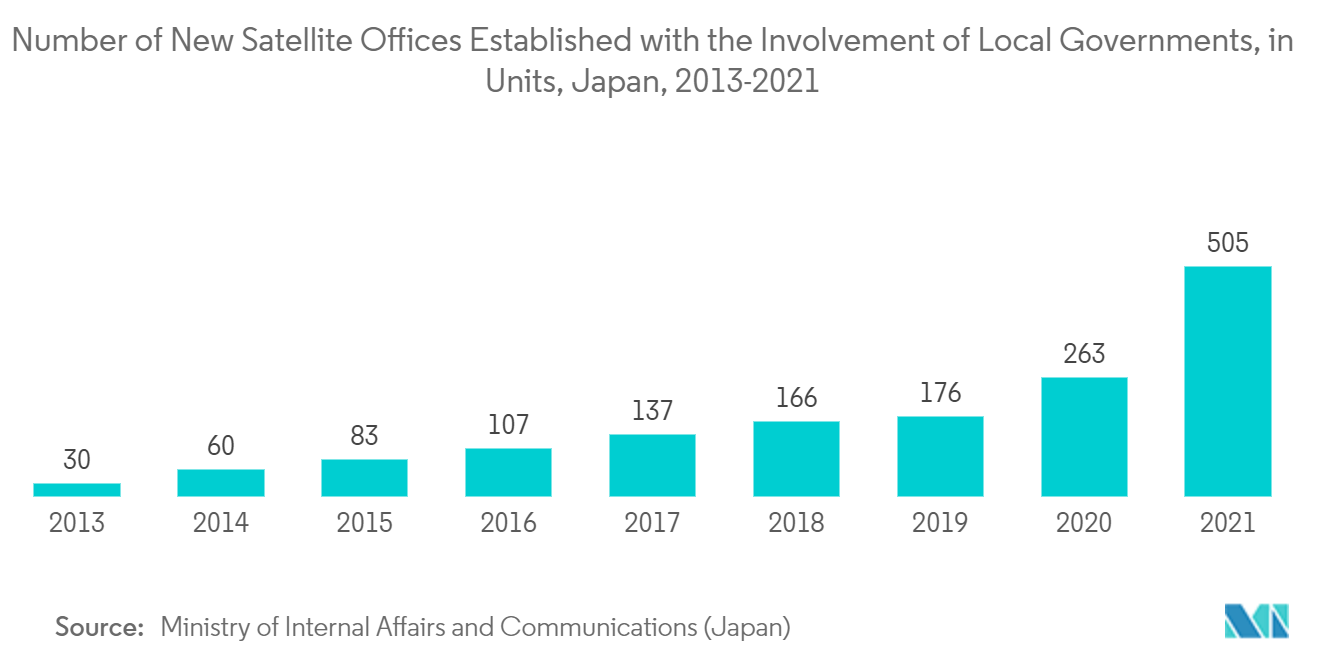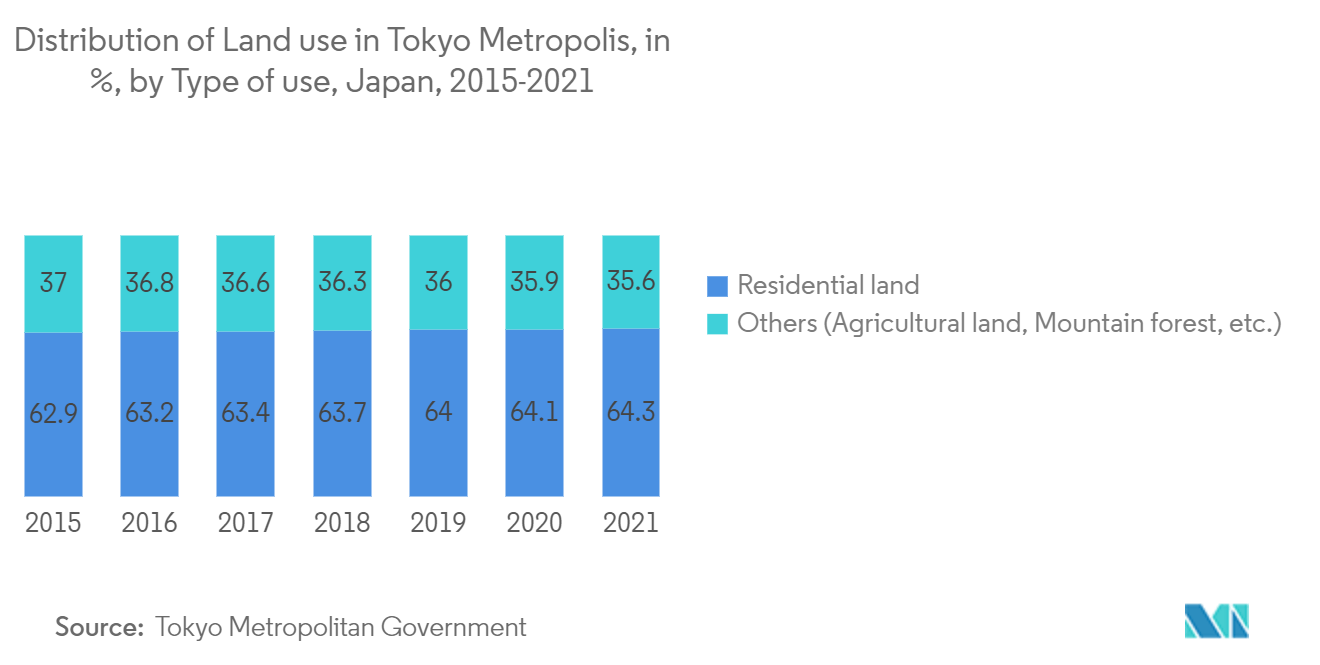Market Trends of Japan Satellite-based Earth Observation Industry
Government Initiatives and Investments to Drive the Market Growth
- The Japan satellite-based earth observation market is experiencing significant growth, primarily driven by the Japanese government's active involvement and investments. The government's initiatives and funding have played a crucial role in promoting the development and utilization of satellite-based Earth observation technologies across various sectors.
- The Japanese government has allocated substantial funding to support research, development, and implementation of satellite-based Earth observation projects. Funding programs such as grants, subsidies, and tax incentives encourage public and private entities to invest in Earth observation initiatives. These financial resources facilitate the development of new technologies, data acquisition systems, and data processing infrastructure.
- Additionally, the government actively promotes collaborations between public and private entities to drive the growth of the satellite-based Earth observation market. Partnerships between government agencies, research institutions, and private companies foster innovation, knowledge sharing, and resource pooling. These partnerships facilitate the development of cutting-edge technologies, data analysis methods, and commercial applications.
- Further, the government, particularly the Ministry of Internal Affairs and Communications, has encouraged the establishment of satellite offices throughout Japan. These offices are hubs for satellite-related activities, including data acquisition, processing, and analysis. By establishing satellite offices in rural areas as part of a regional revitalization strategy, the government aims to extend the benefits of Earth observation technologies beyond urban centers and promote equitable access to satellite-based data and services.
- According to the Ministry of Internal Affairs and Communications (Japan), with the help of local governments, 505 new satellite offices were opened in Japan in the fiscal year 2021, which was a decade high. The Ministry of Internal Affairs and Communications is currently encouraging to promote the creation of satellite offices in rural areas as a regional revitalization strategy. Such initiatives indicate the government's deliberate effort to extend the benefits of satellite-based Earth observation beyond urban centers, potentially driving the market's expansion in previously underserved regions.

Urban Development and Cultural Heritage Segment to Hold a Significant Market Share
- As the country experiences rapid urbanization and grapples with the need to balance development with the preservation of cultural assets, satellite imagery and data play a crucial role in monitoring, planning, and managing urban areas.
- Japan's urban areas are expanding rapidly, leading to increased demand for satellite-based Earth observation to support urban planning and infrastructure development. Satellite imagery provides valuable insights into urban growth patterns, land-use changes, and population dynamics. It aids in identifying suitable areas for residential, commercial, and industrial development, as well as planning transportation networks, utilities, and public services. The accurate and up-to-date data obtained through satellite observation assists urban planners in making informed decisions for sustainable and efficient urban development.
- Japan boasts a rich cultural heritage with numerous historical sites, archaeological remains, and traditional landscapes. Satellite-based Earth observation is vital in documenting and preserving cultural heritage by providing high-resolution imagery, elevation data, and mapping capabilities. Satellite imagery helps identify, document, and monitor heritage structures, archaeological sites, and traditional landscapes. This information supports heritage preservation planning, restoration projects, and the sustainable management of cultural assets. It also aids in monitoring and preventing unauthorized development or encroachment on heritage sites.
- The expansion of residential areas necessitates the development of supporting infrastructure such as transportation networks, utilities, and public services. Satellite-based Earth observation enables the monitoring and assessing infrastructure systems, including roads, bridges, railways, and utilities. It provides valuable data for infrastructure planning, maintenance, and disaster management, ensuring urban areas' efficient and sustainable development.
- According to the Tokyo Metropolitan Government, most of the land in the Tokyo metropolitan area was used for residential purposes in 2021, which accounted for 64.3 percent of the total land area. Since 1955, residential land has increased by more than twofold. Land for farming and mountain forests both significantly declined at the same time. The increase in residential land in the Tokyo metropolis reflects the region's rapid urbanization and urban development. In addition, the reduction in land for agricultural activities and mountain forests signifies the impact of urbanization on natural landscapes and ecosystems. As cities expand and population density rises, satellite-based Earth observation becomes crucial for monitoring urban growth patterns, land-use changes, and infrastructure development.

